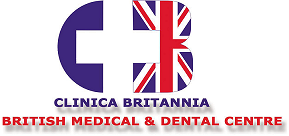Otoesclerosis. CLINICA BRITANNIA
Precision design La otosclerosis es una afección del oído relativamente común que afecta aproximadamente a una persona de cada 200 en alguna etapa de su vida. Dentro del oído medio hay tres huesos diminutos que vibran para transmitir sonidos desde el tímpano al mecanismo auditivo del oído interno. La otosclerosis se describe mejor como una forma de artritis en estos pequeños huesos y el hueso que forma el oído interno. Los huesos se vuelven blandos y agrandados, lo que reduce su capacidad para transmitir vibraciones y, por lo tanto, sonidos. Es más común en las mujeres y, por lo general, comienza a finales de la adolescencia o en los veinte años. Su aparición puede ser provocada por el embarazo. Existe una tendencia significativa a que pase de una generación a la siguiente. Los principales síntomas de la otosclerosis son un empeoramiento constante de la sordera y un zumbido constante en los oídos. dentistry.3D printers use a chemical process called polymerization to fuse liquids or powders to make intricate dental materials. These products include personalized veneers, crowns, bridges, night guards, appliances and dentures. 3D printing is more precise in design for an accurate fit. If adjustments are needed, the changes usually can be made while the patient waits.
Saves time, money
Traditionally, dental offices take impressions of patients’ teeth to get the correct shape for restoration. Then they send the forms to an outside dental lab where the crowns, veneers or bridges are made. Dentists pay the dental lab, and the cost is included in the price for the procedure.
Most dental labs take two to three weeks to produce custom dental materials by hand. Once finished, the ordered item is returned to the dental office where the dentist checks to see how it fits in the patient’s mouth. The dentist can make minor adjustments to improve the fit. However, if the crown or bridge still does not fit correctly, it is sent back to the lab to remake it. This can be frustrating for patients, because they will have to come back again to finish the procedure. And, they will need to keep wearing the temporary crown or bridge until the permanent one is remade.
With 3D technology, dental labs or dental offices can use a 3D printer to make customized dental materials onsite. While 3D printers are considered expensive, many busy dental labs and large dentist offices can justify purchasing at least one.

